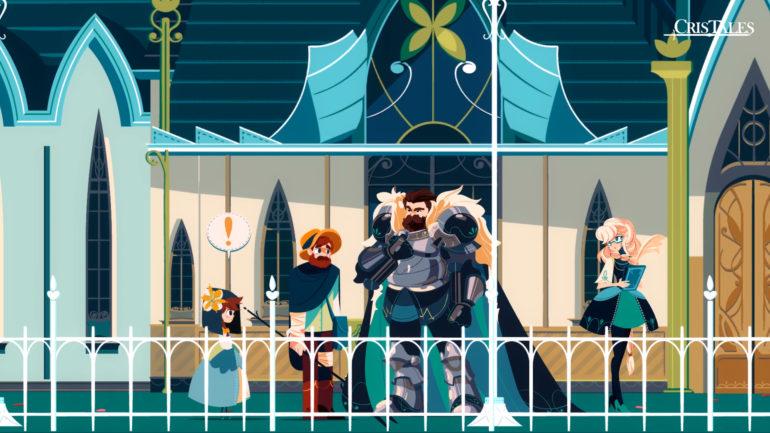‘CrisTales’ Is a Colombian-Inspired, Time-Traveling Love Letter to Classic RPGs
By Sarah LeBoeuf
LOS ANGELES (Variety.com) – With so many gaming announcements, surprises, and videos coming out of Los Angeles during E3 this week, you’d be forgiven for missing a minute-long trailer for “CrisTales.” The strikingly animated RPG was revealed during the PC Gaming Show on June 10, with a teaser showing off its main mechanic: merging past, present, and future into one continuous journey.
At the Modus Games booth on the show floor, creator Carlos Rocha treated us to a 15-minute gameplay demonstration, allowing us to see previously unreleased segments of “CrisTales.” Rocha, a native of Colombia, is the founder of indie studios Syck and Dreams Uncorporated, the developers of this unusual game. Though you might not immediately pick up on it looking at the fairy tale-esque, cartoony graphics, Rocha drew heavily from the architecture, style, and ecosystem of his home country. “CrisTales’” towns were built with real-life Colombian locations in mind, and you’ll see bits of Colombian culture in how the NPCs dress. Even the main character’s croaky sidekick is based on the deadly Colombian Golden Poison Frog — but more on him later.
In “CrisTales,” you’re a young girl named Crisbell who acquires an interesting power: being able to see into the past and future from her place in the present. It’s certainly not the first game to use time-travel mechanics, but what’s interesting about “CrisTales” is that all three eras exist onscreen at the same time. For example, the cathedral where Crisbell gets her powers can be seen in three forms: past, where construction tools indicate that it’s still being built; and future, where the architecture is showing its age, unlike its pristine condition in the present.
The way it works is that Crisbell is always surrounded by what’s happening right now, while to the left is the past and the right is the future. That means as you move her around, you’ll be able to see time’s effects on the world around her. In one such instance, Crisbell notices that a local home and the town’s apothecary, located next to each other, will eventually fall into disrepair. The source is rot coming from within, but the town’s elderly architect is unwilling to take action. (Sadly, when viewing the future, he’s gone entirely.)
This is where Matias — that yellow frog friend — comes in handy. While Crisbell remains stuck in her own time, Matias can jump back and forth, taking the camera with him. By completing a series of fetch quests, Matias and Crisbell are able to set in motion a series of events that lead to them finding a remedy for the dreaded rot. One problem: there’s only enough to save one of the afflicted buildings. As Matias tells Crisbell, even as a Time Mage, there’s only so much she can help.
This player choice theoretically means that every 20-hour playthrough of “CrisTales” could be different. According to Rocha, your actions will have lasting, reverberating consequences across the flow of time, though it’s unclear from the demo just how consequential these decisions will actually be.
Of course, being an RPG, “CrisTales” isn’t all about the day-to-day lives of unsuspecting villagers. The combat isn’t quite ready for prime time, but we got a quick look at how it works. It was hard to fully grasp what was going on, but what’s clear is that there’s a turn-based combat system that incorporates the crystal of time. Enemies might be quick but weak in the past, but strong and slow in the future. In one boss fight against the dual-shielded Volcano sisters, antagonistic twins whose personalities shine through their fully voice-acted dialogue, Crisbell and her party cause those impenetrable shields to rust. When projected into the future, the sisters are more powerful, but their shields are starting to fall apart, leaving them vulnerable.
Though the early parts of the demo leaned a little too heavily on fetch quests and expositional dialogue, there’s a lot to like about “CrisTales.” Aside from its Colombian roots, it’s also inspired by “Super Mario RPG” and Disney princesses, and all of those sources weirdly come together to make something beautifully animated and actually pretty interesting. It’s not easy to stand out when pitted against dozens of other games, many of them AAA titles with budgets in the hundreds of millions, but “CrisTales” managed to make its mark. Though we can’t look into the future to see how these ideas all work, we’ll find out when it launches for PC and consoles in 2020.

